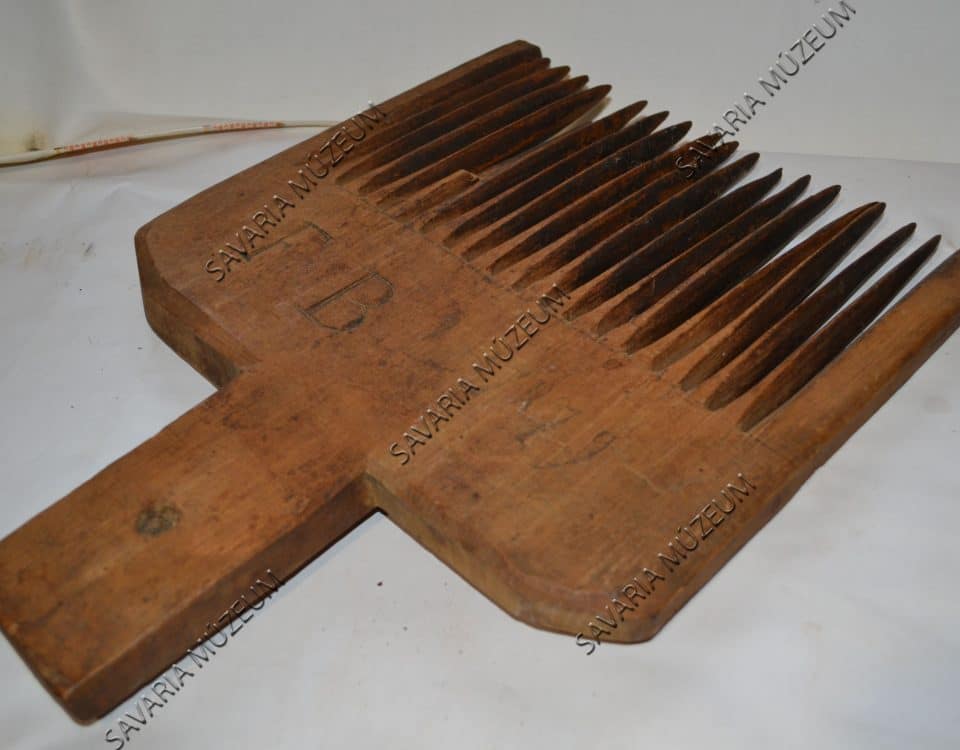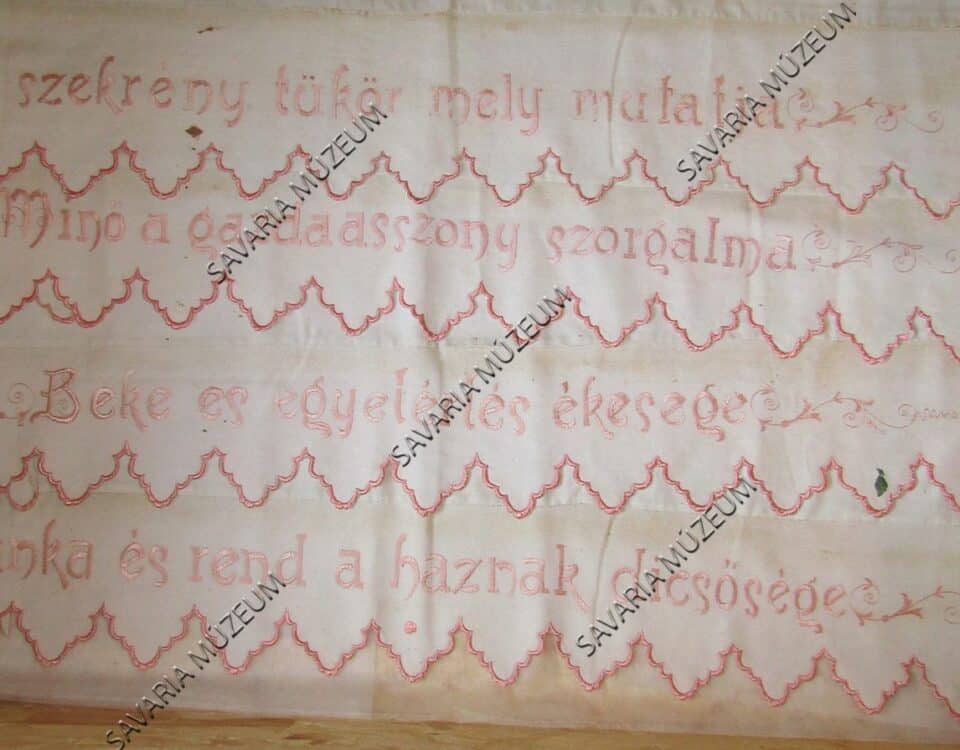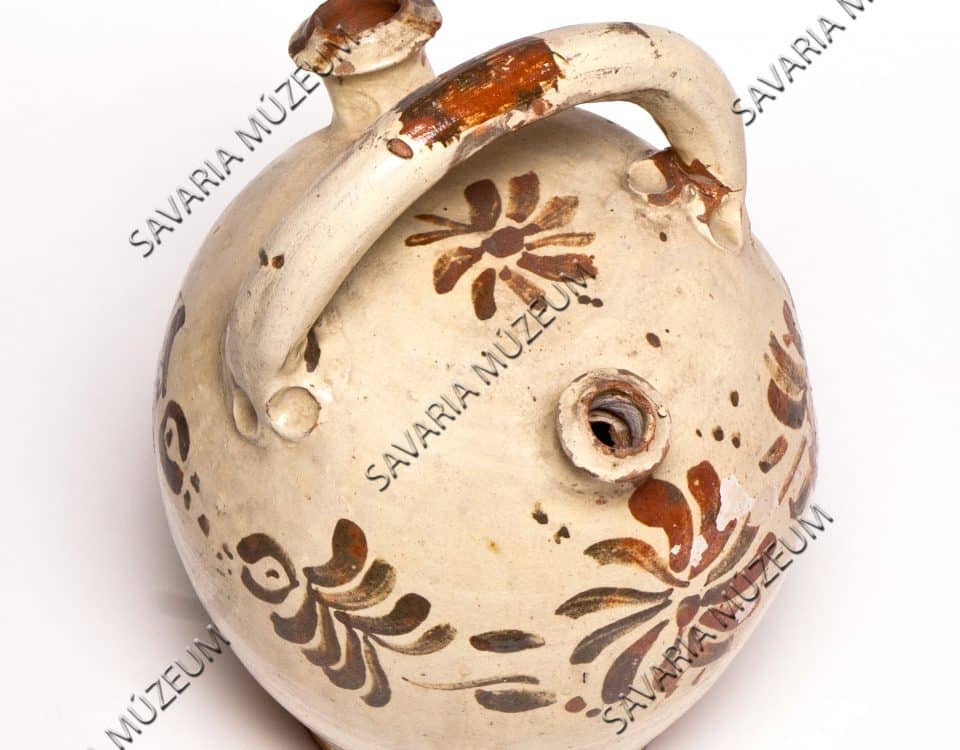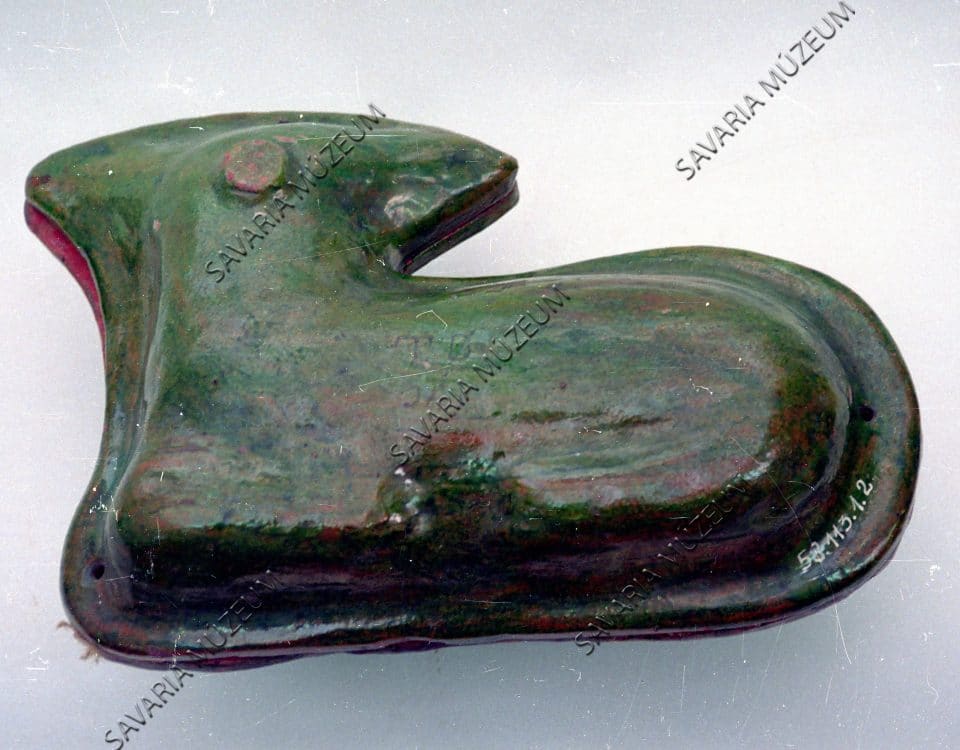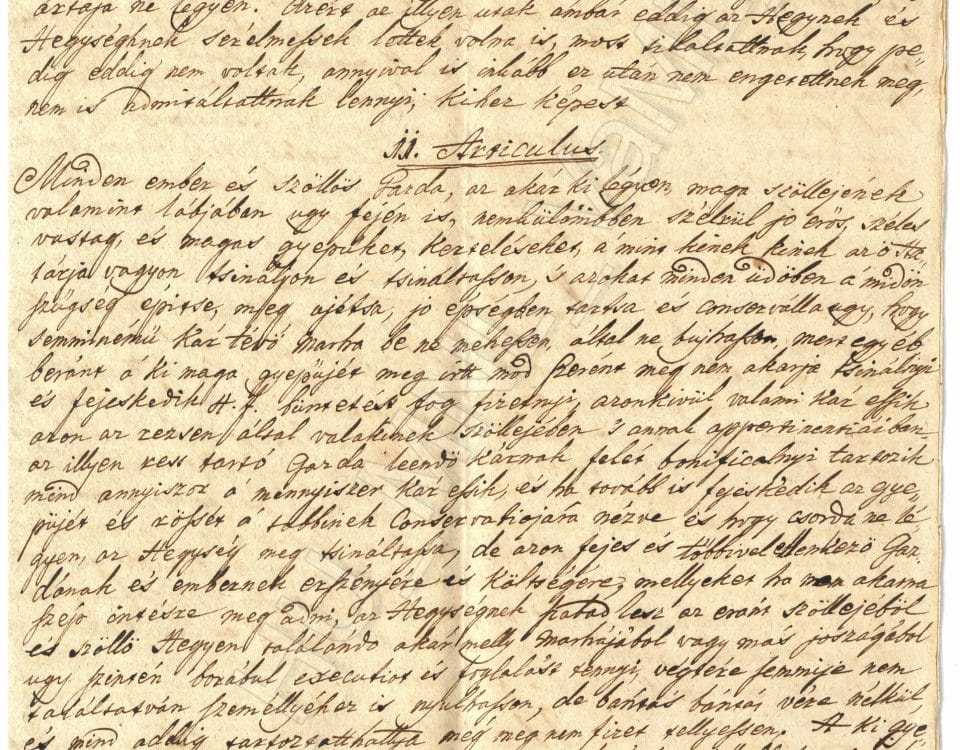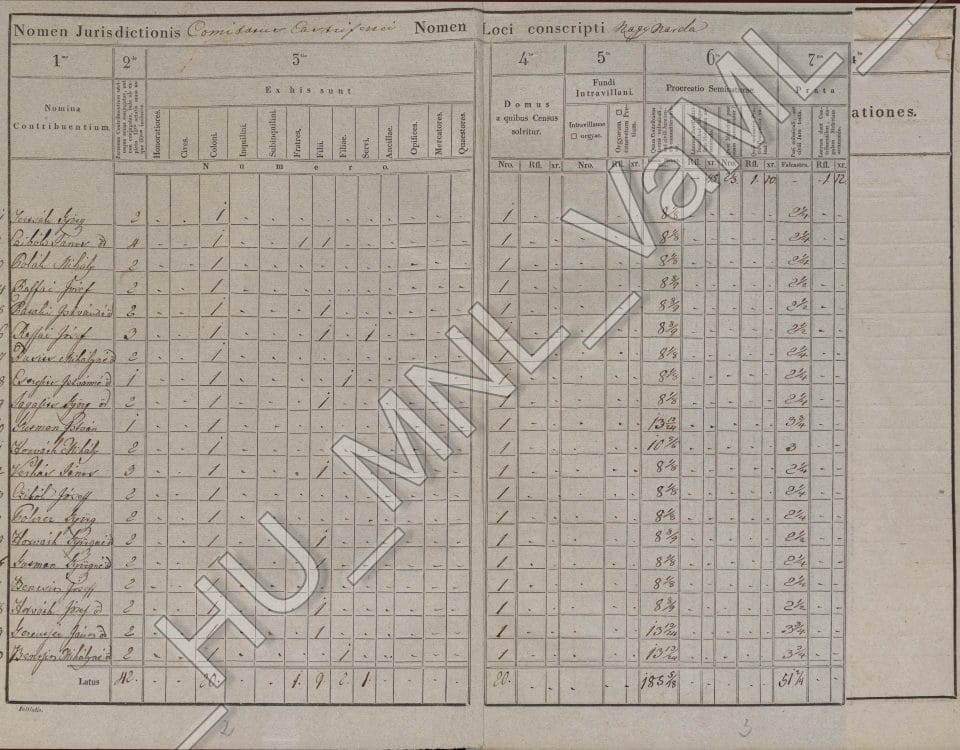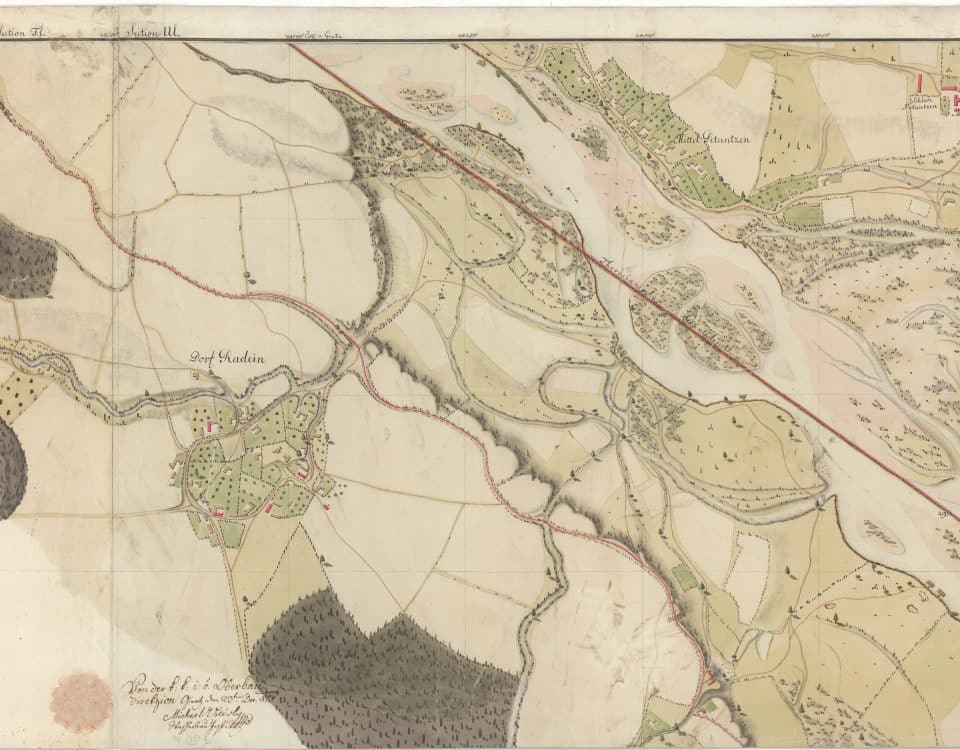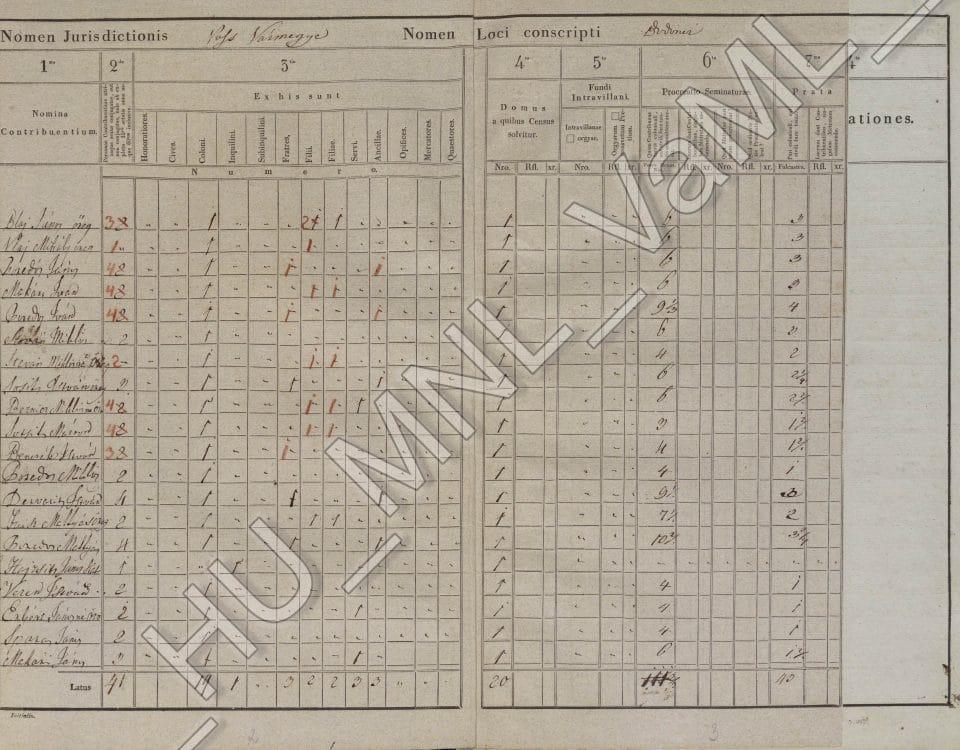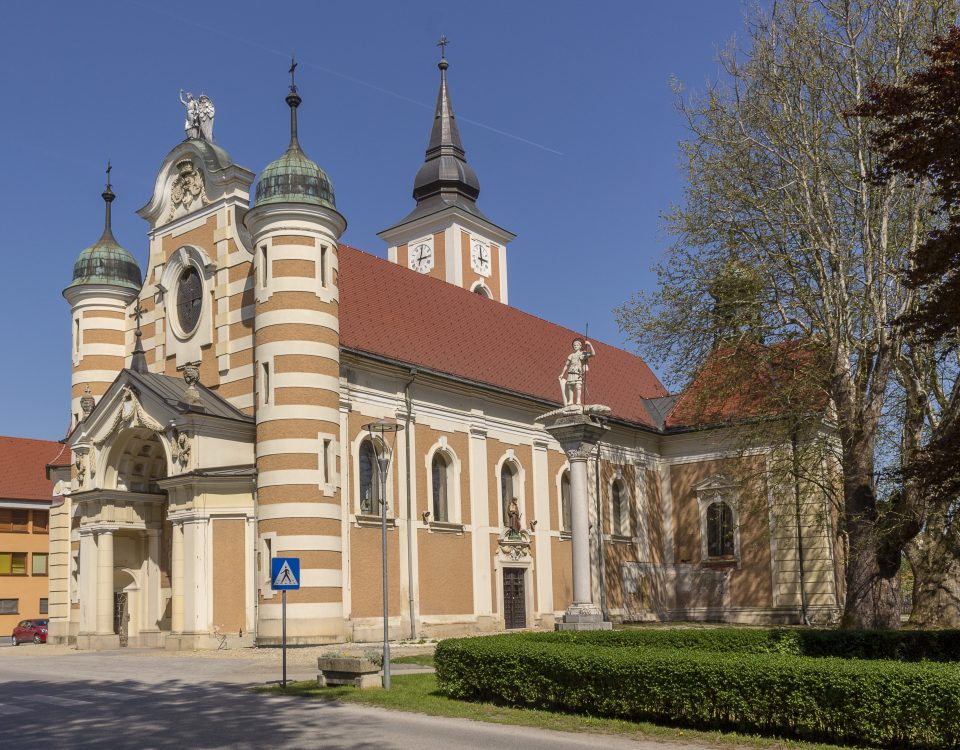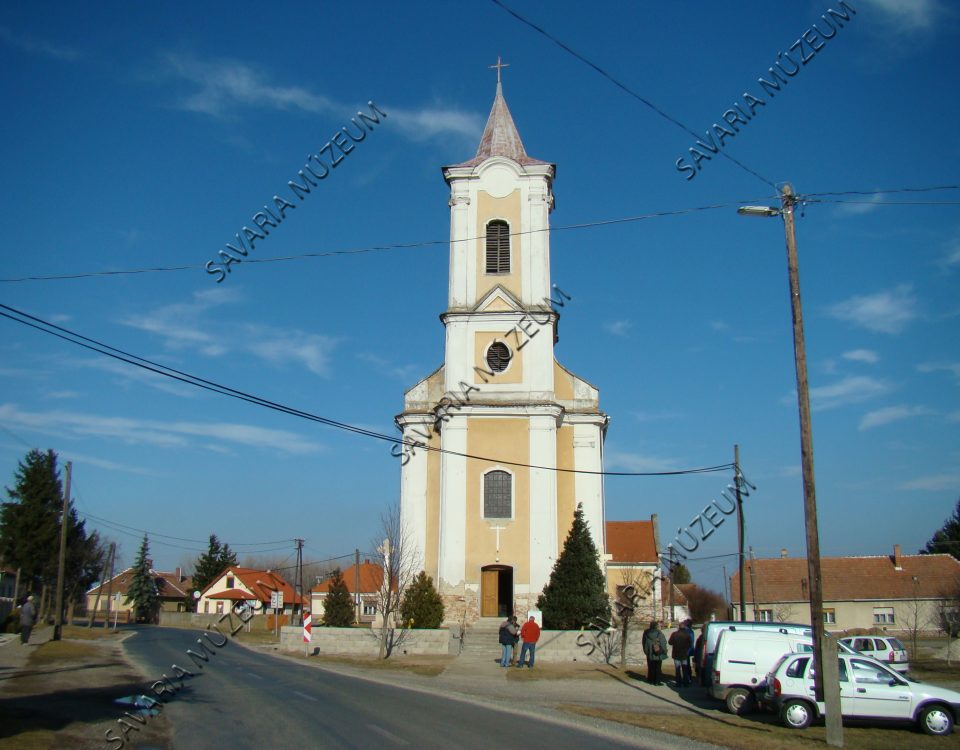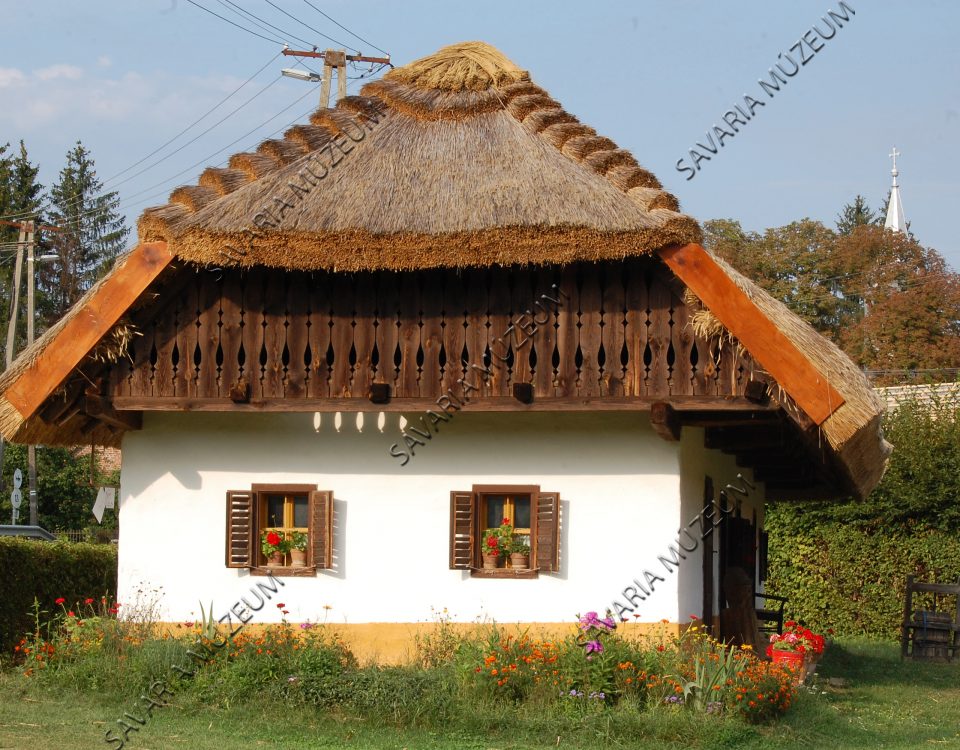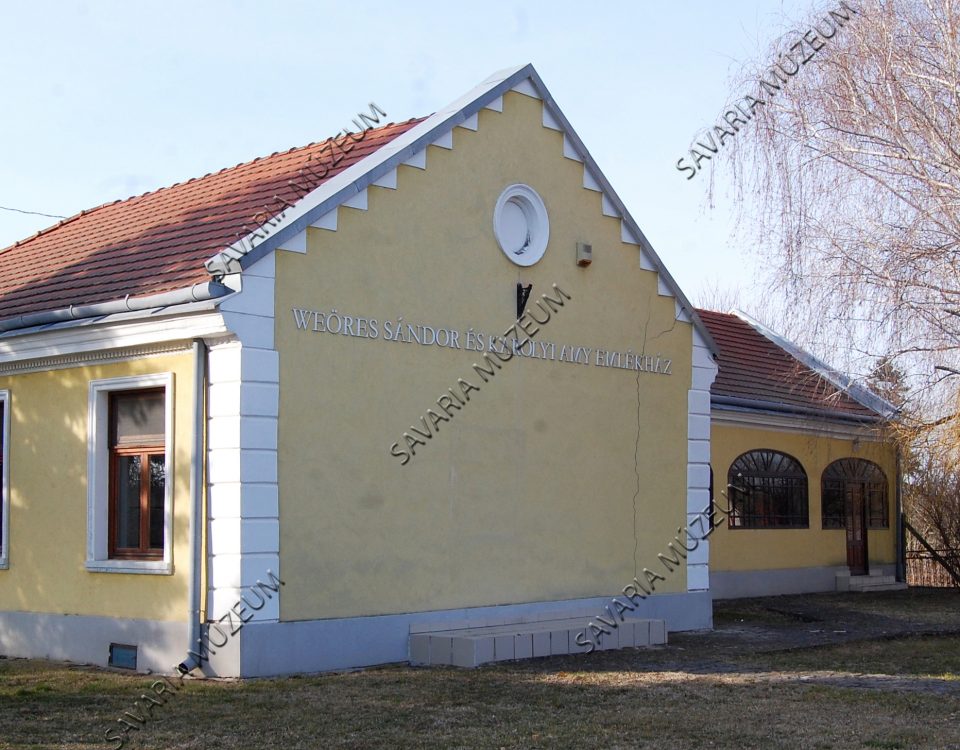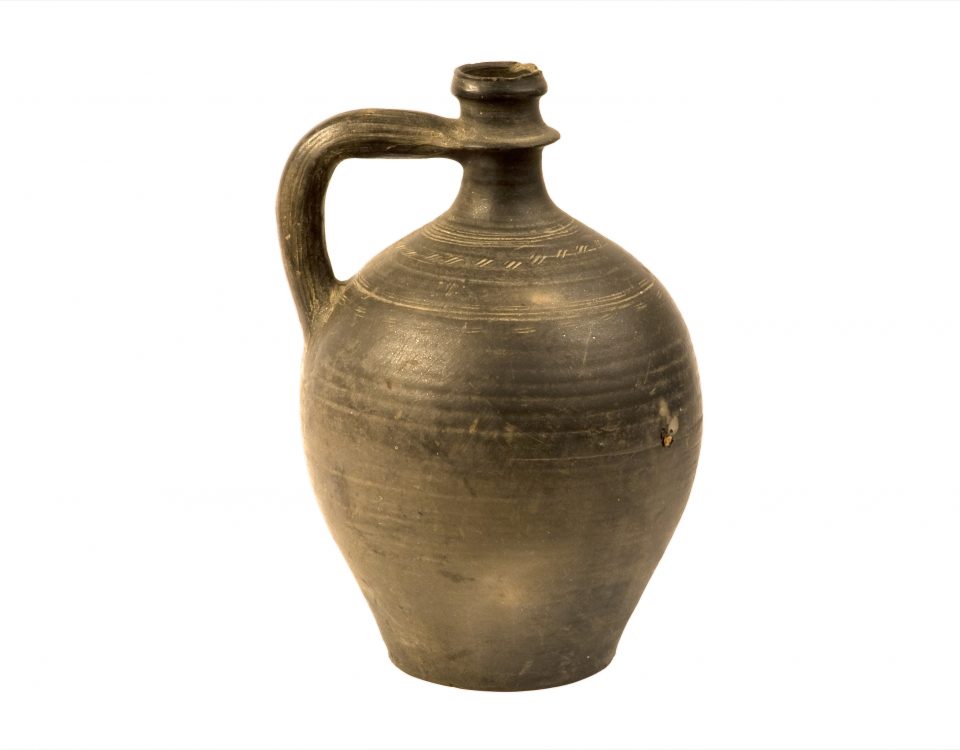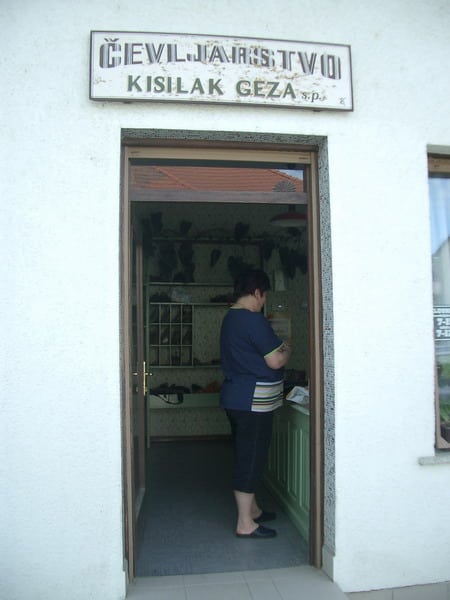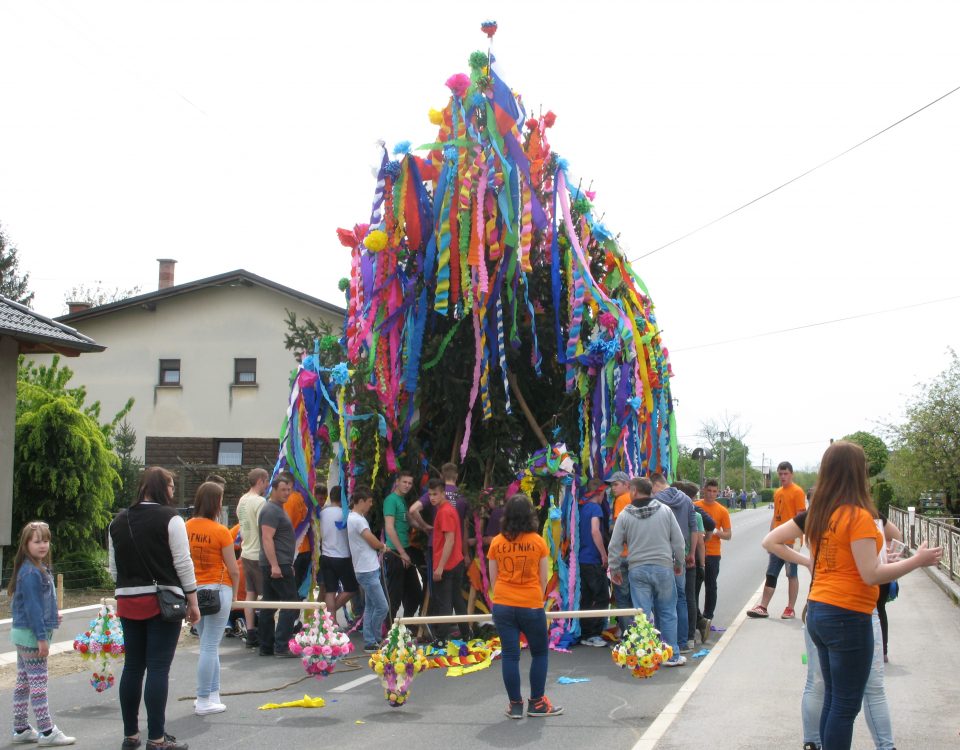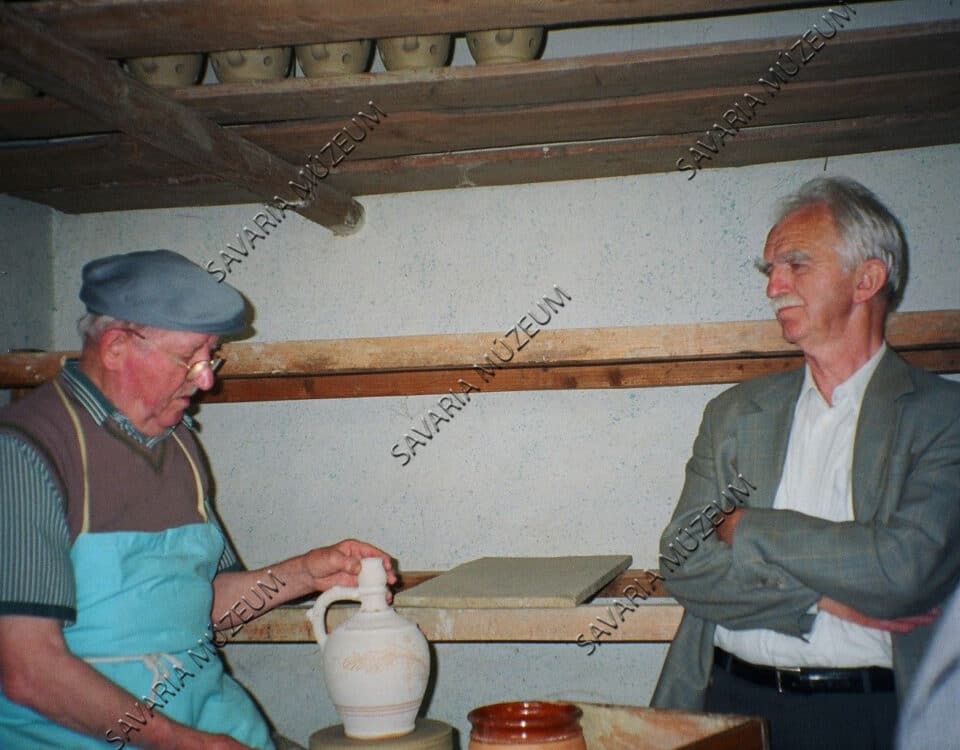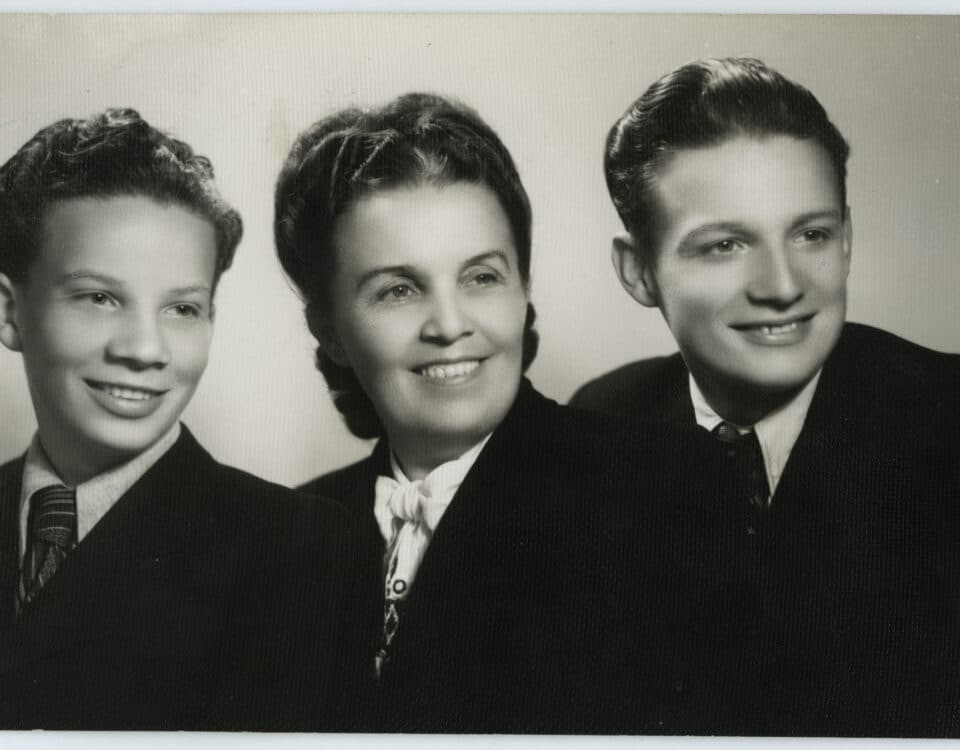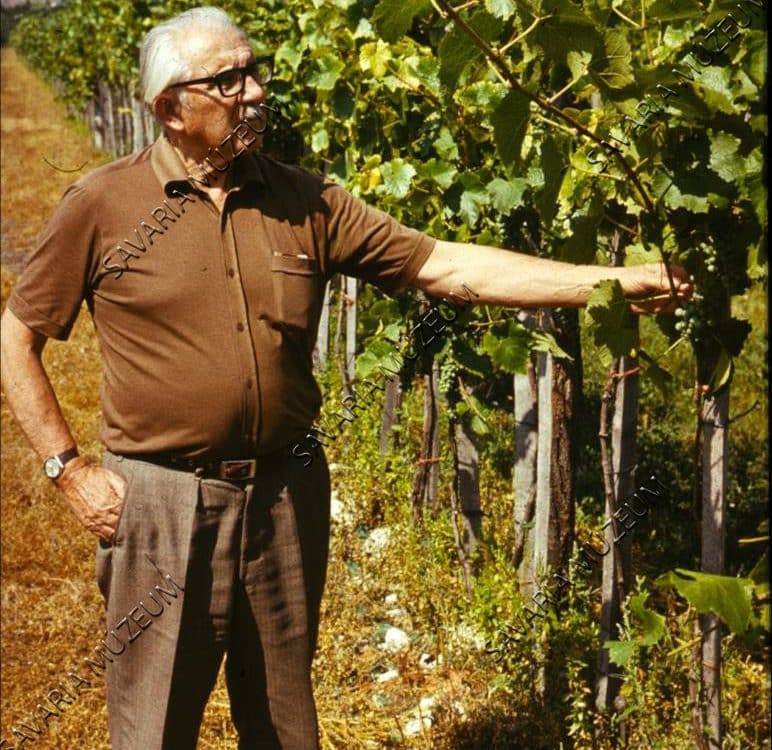Legend
Object
Archive material
Built cultural heritage
Intangible heritage
Personage
Audio-visual material
Random selection of objects
10. February, 2020
A wooden base carved from a single piece of wood, with pointy teeth at the end. This was used to pull the flax seeds off the top of the plant. In Hungary it was used only in the westernmost part of Transdanubia. It is widespread among Slovenians.
26. February, 2020
Cabinet strips for four shelves. Arranged in a specific order, with texts praising the housewife. Cabinet strips and other home textiles began to spread with the appearance of the “clean room” from the 1930s. The inscriptions: 5. “The cabinet is a mirror that shows” 6. “What is the diligence of the housewife” 7. “Work and…
31. March, 2020
Burnt two-hole pitcher with brown floral patterns. One hole has a smaller diameter. Handmade in Bajánsenye. It was donated by József Kálmán. It was used in the second half of the 19th century.
19. February, 2020
The lamb-shaped baking device made of fire-proof clay consists of two parts. It is green outside, brown glazed ceramic inside. The lower part stands on three small feet. At Easter they baked lamb-shaped cakes in it.
Random selection of archive material
3. March, 2020
The mountain laws included feudal obligations, instructions on the time, manner, technique and organization of the annual vineyard work, as well as measures to maintain the vineyard and its accessories, crop safety, and the ethics of economic and social behavior on the mountain. The articles were based on the relative independence of the vineyard, in…
3. May, 2020
The 1828 census corresponds to today 's tax return form. The unit is the head of the taxpayer family. The list contains the number of peasant farms, the size of the cultivated area, the varieties of crops, the different ways and costs of production in each region.
19. February, 2020
The uncontrolled branches of the River Mura have caused constant border disputes between the Kingdom of Hungary and the Styrian Principality. This map is a piece of a larger compilation, its most important data being the state boundary established in 1755. Its value and its problem at the same time is that it is more…
5. May, 2020
Popis leta 1828 ustreza današnjemu obračunu davka. Enota je glava družine davkoplačevalcev. Seznam vsebuje število kmečkih kmetij, velikost obdelovalne površine, sorte pridelkov, različne načine in stroške pridelave v vsaki regiji.
Random selection of built cultural heritage
11. February, 2020
The Baroque Church of St. Ladislaus was built in 1742, commissioned by General László Ebergényi. The church was named after King Ladislaus I of Hungary, who was born in 1041. From 1077 he was the king of Hungary. The church is 34 meters long, 16 meters wide and 10 meters high. In 1894, the side…
4. May, 2020
The church was built by Lazar Niczky in 1776. The top has wood shingle, the floor is made of stone. It was dedicated in honor of St. Nicholas. The two side altars were erected in honor of St. Anne and St. Rosalie. One of its crypts belongs to the Niczky family, the other to the…
18. August, 2020
The blacksmith workshop and the house next door were built for the blacksmith commissioned by the community. The community built this house near the river Zala so that the water for cooling the forged material be easily accessible. The first inhabitant of the house was blacksmith Antal Károlyi, while the last one, Mrs. Jenő Károlyi…
21. February, 2020
Sándor Weöres, the poet spent his childhood in this house. In the year of his death (1989), a memorial room was created in the building. Since 2006, all rooms have exhibitions. His wife, the poetess Any Károlyi's oeuvre is also presented, as well as the couple’s furniture, books, and manuscripts. In the park next to…
Random selection of intellectual cultural heritage
10. February, 2020
Pottery was the most common craft activity, with at least one potter living in almost every village. In the Prekmurje region, two groups of potters can be distinguished based on their decoration and method of baking: the potters of Filovci and Goričko. Those from Filovci were known for their “black baked” pots. The Pütra, was…
18. August, 2020
The cobbler's shop Kisilak is the last in Pomurje that makes shoes. In the 1930s, Karel had a lorry and 15 workers, who made and sold shoes at fairs all over Prekmurje, Croatia (as far as Legrad) and in Styria. Geza, Sr. took over his father’s workshop in 1962 and managed it up to 2010,…
10. February, 2020
In Gančani, erecting May-pole is part of the rural heritage. Basically, it is a religious folk festivity. In Gančani, erection of May poles dates back to 1919, when the young set them up in honor of Virgin Mary for their lucky return from the First World War. The 18-year-olds gathered on the first Friday of…
20. February, 2020
Lajos Merics has been making painted Easter eggs for almost 40 years. Both her daughter and her son-in-law learned the craft. Since 1995, they participate in competitions. Katalin Horváthné Merics was given the title of egg painter folk artist. Blown eggs are decorated with scratched, engraved techniques. They also make pierced eggs. Mrs. Mersics Lajos…
Random selection of personality
3. March, 2020
He was born in Orfalu, and learned the pottery craft in Magyarszombatfa. He was apprentice in Zalaegerszeg, Sümeg and Szentgotthárd. He lived and worked in Kétvölgy (Permise) since 1940. From the 1970s he was the only Slovenian potter in Hungary. His works have been exhibited several times in Hungary and Slovenia. In 1984 he was…
20. May, 2020
The illustrator, animator, sculptor and film director Miki (Nikolaj) Muster (Murska Sobota, 1925 – Ljubljana, 2018) is best known in Slovenia for his comic strip characters Zvitorepec, Trdonja and Lakotnik, whose adventures he published in the Slovenski poročevalec newspaper between 1952 and 1973. He was the author of several picture books for children, advertisements, a…
8. April, 2020
Horticultural engineer Márton Németh, born in Nemesládony, was a distinguished person in the viticulture research in Pécs. His work brought him international fame. The collection of wine grape varieties created by Németh from 1952 was one of the largest and most valuable in the world. He was a committed supporter of vine breeding by clone…
18. August, 2020
Lajos Markovics was a Croatian parish priest, born in Felsőberkifalu in Vas County, a settlement formerly inhabited by Croatians. He was ordained a priest in Szombathely on June 16, 1935. He became a chaplain in Apátistvánfalva, where he served as parish priest until his death, and is buried there. In 1975 he became a titular…
Random selection of audiovisual material
3. March, 2020
Stolnjek prestri se (Prtič pogrni se) / Wishing-tablecloth The Rába Region’s Slovenes’ version of the internationally known “Wishing-Table” tale . (ATU 563)
11. February, 2020
They were singing this lullaby when the baby was rocked in a hutch or cradle. A variation of three words (heje, baba, bijja) gives the lyrics of the song. The lullaby was collected in 1972 by Antal Békefi.
3. March, 2020
A wedding song that was sung when the bride left her home.
3. March, 2020
Sojenice (Sojenice) / Fate fairies In the Slovenian Rába Region, fate fairies predict the fate of a child at the birth. Local version of an international motif. (ATU 934)

